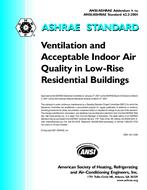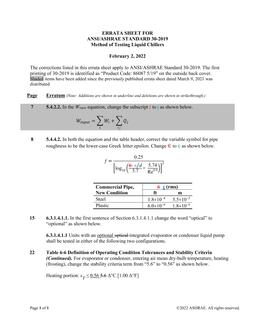In compliance with ANSI/ASHRAE Standard 15-2001, Safety Standard for Refrigeration Systems, a large quantity of Group B1 or Group B2 refrigerant cannot enter the occupied space of a building. Instead, a secondary fluid must be used to circulate through the refrigeration system’s components located within the occupied space. In typical systems, a single-walled liquid-to-liquid heat exchanger is used outdoors with an air coil in the occupied space. In this study, a double-walled heat exchanger is considered to replace these two components, where the double-walled configuration prevents leaking refrigerant from entering the occupied space of a building. Consequently, the double-walled heat exchanger located in the occupied space serves as a direct expansion coil. While any Group B1 or Group B2 refrigerant may be considered, ammonia, which is a Group B2 refrigerant, became the focus of this study due to the availability of commercial absorption units.
Four refrigeration system concepts are developed. One system—the reference system—represents current system design, incorporating a single-walled heat exchanger and an air coil. Three other proposed systems are also described, each containing a double-walled heat exchanger. Twelve design criteria accompany these proposed systems, which must meet the safety requirements provided.
From reliability data gathered and the calculations made, the three proposed conceptual systems are found to be at least as, if not more, reliable than the reference conceptual system in two comparisons. Considering the systems in their entirety, the reference system has a reliability value of 0.639, and the three proposed conceptual systems have reliability values of 0.654 or greater. Similar results in comparison are attained when considering the portion of the system from which refrigerant would escape to the occupied space.
Since the proposed system reliabilities are equivalent to the reference system using a secondary fluid, the proposed systems are determined to be no more of a risk to safety than current systems. Thus, the application of the double-walled heat exchanger, which permits the refrigerant to enter the occupied space, appears acceptable on the basis of this risk analysis.
Units: SI
Citation: ASHRAE Transactions, vol. 110, pt. 2
Product Details
- Published:
- 2004
- Number of Pages:
- 14
- File Size:
- 1 file , 240 KB
- Product Code(s):
- D-23214


